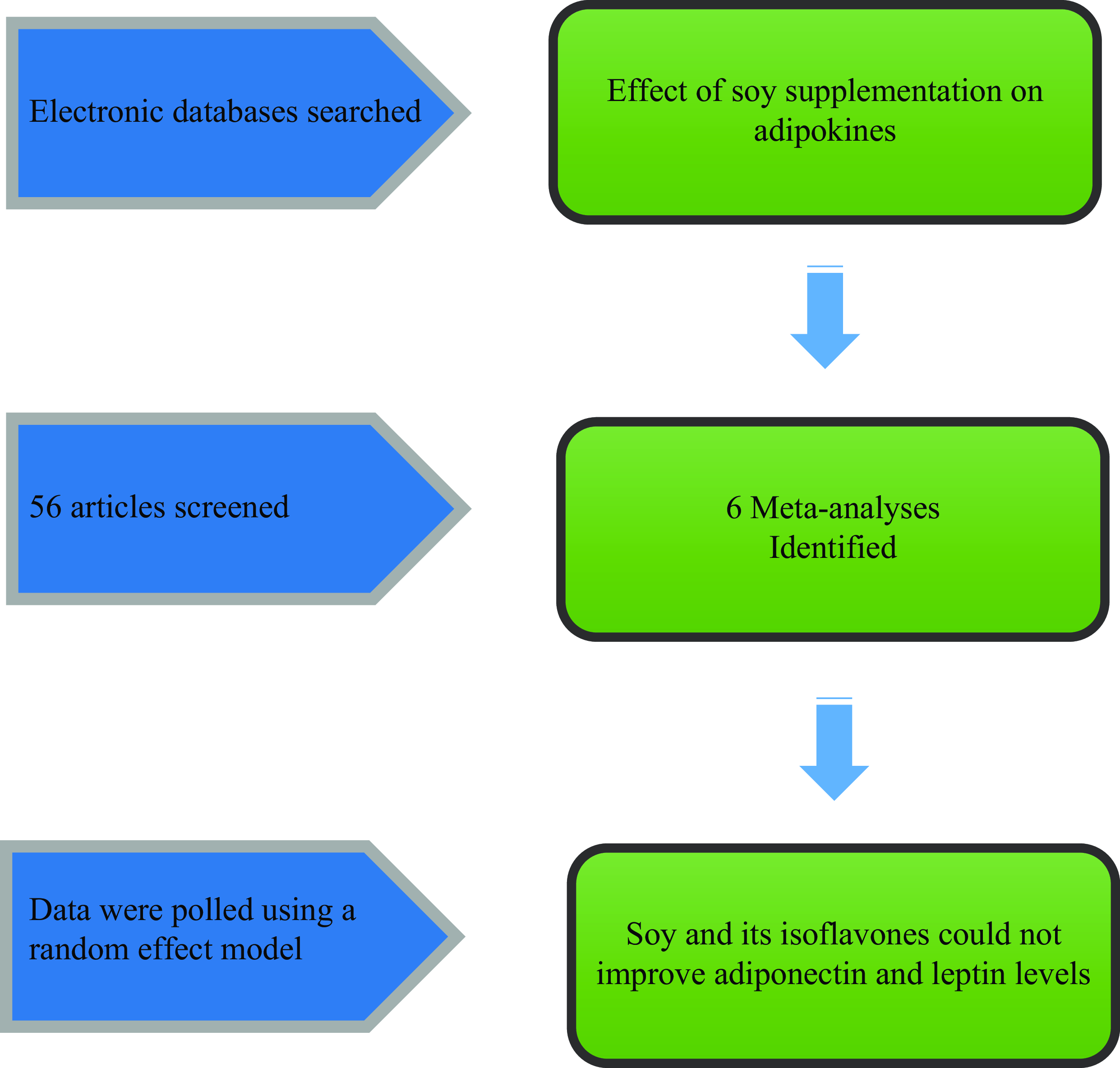No CrossRef data available.
Published online by Cambridge University Press: 07 March 2025

The therapeutic effects of soya consumption on adipokine concentrations have yielded inconsistent results in previous meta-analyses. This umbrella meta-analysis aims to investigate the impact of soya and its isoflavones on serum adiponectin and leptin levels in adults. We searched the Cochrane Central, Web of Science, PubMed and Scopus databases until October 10, 2024. The articles were restricted to those written in English. We included meta-analysis studies that evaluated the effects of soya and its isoflavones on levels of adiponectin and leptin and reported effect sizes (ES) and corresponding CI. Two independent reviewers screened all articles based on eligibility criteria and extracted the required data from the included meta-analyses. The meta-analysis was performed using a random-effects model in STATA software. Six meta-analyses of randomised controlled trials meeting the inclusion criteria were included in the current umbrella meta-analysis. The findings indicated that soya and its isoflavones did not have a significant effect on adiponectin (ES = 0·10; 95 % CI: −0·22, 0·41; P = 0·55; I2 = 51·8 %) and leptin (ES = −0·37; 95 % CI: −1·35, 0·61; P = 0·46; I2 = 71·2 %) concentrations. Subgroup analysis based on participants’ mean age, total sample size and duration was conducted. Results showed that the effect is not statistically significant in any of the subgroups. In conclusion, soya and its isoflavones could not improve the adipokines mentioned above. However, further high-quality research in different countries is required to substantiate these findings.